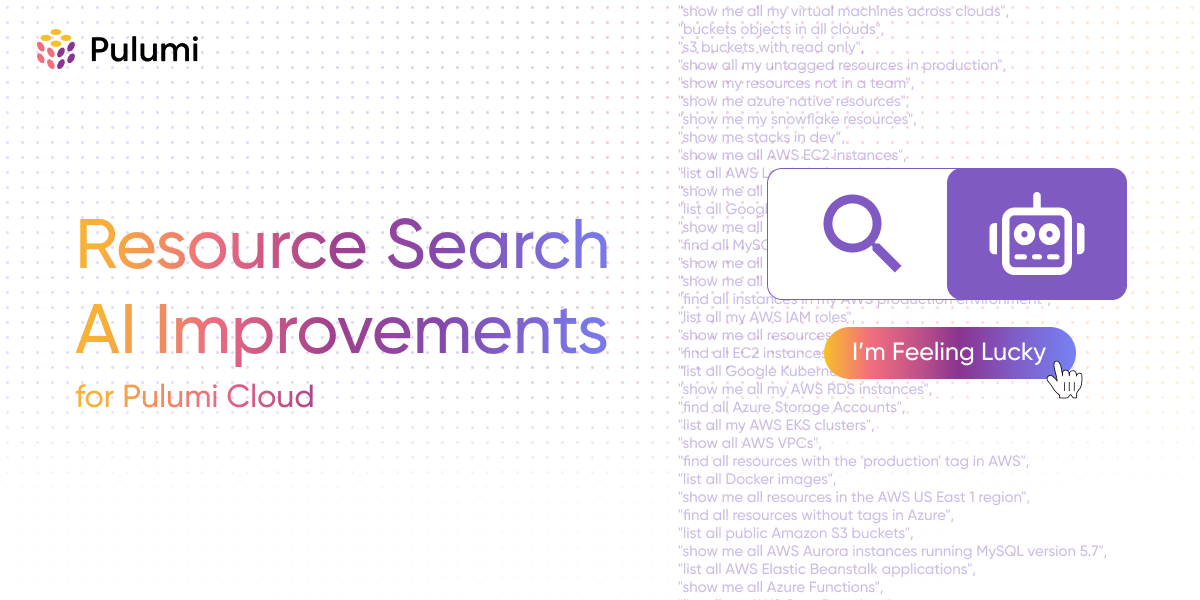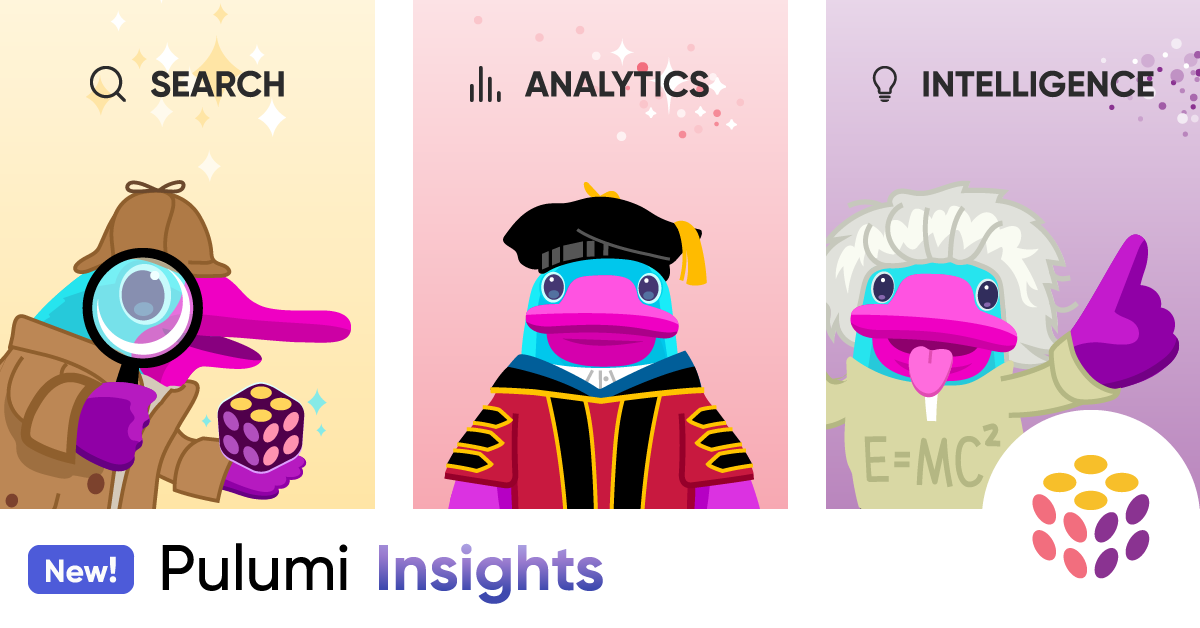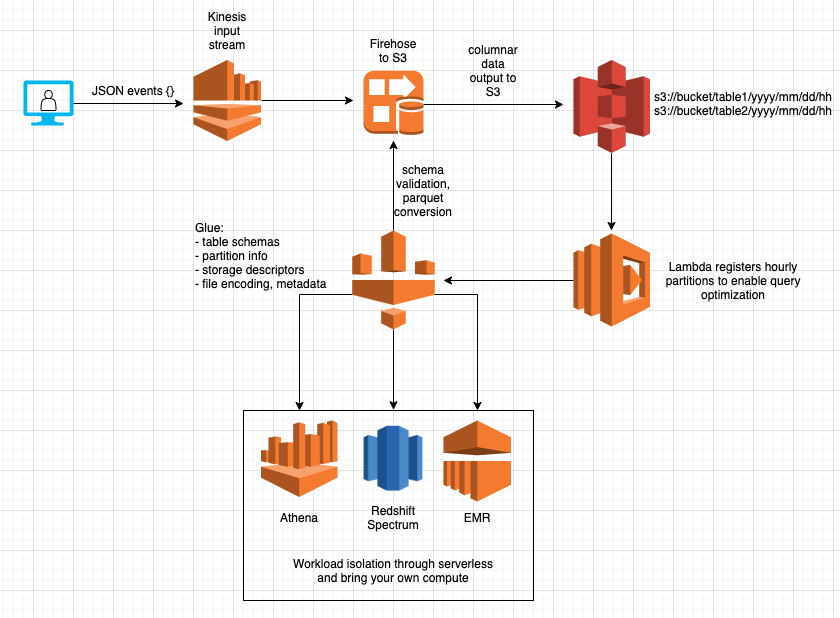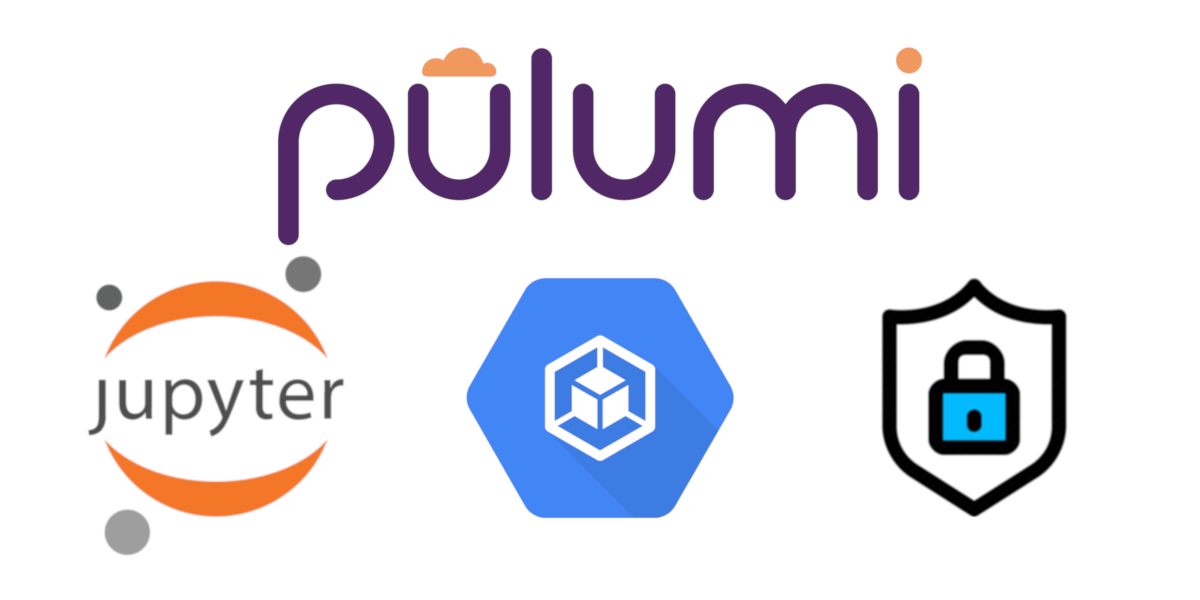Resource Search - AI Assist is Generally Available

Pulumi Cloud Resource Search AI assist functionality is now generally available to all organizations! In addition we have shipped some improvements to the feature to make it easier to use and more discoverable: a toggle on the search bar, suggested queries and an “I’m Feeling Lucky” button to generate a random query for you.



